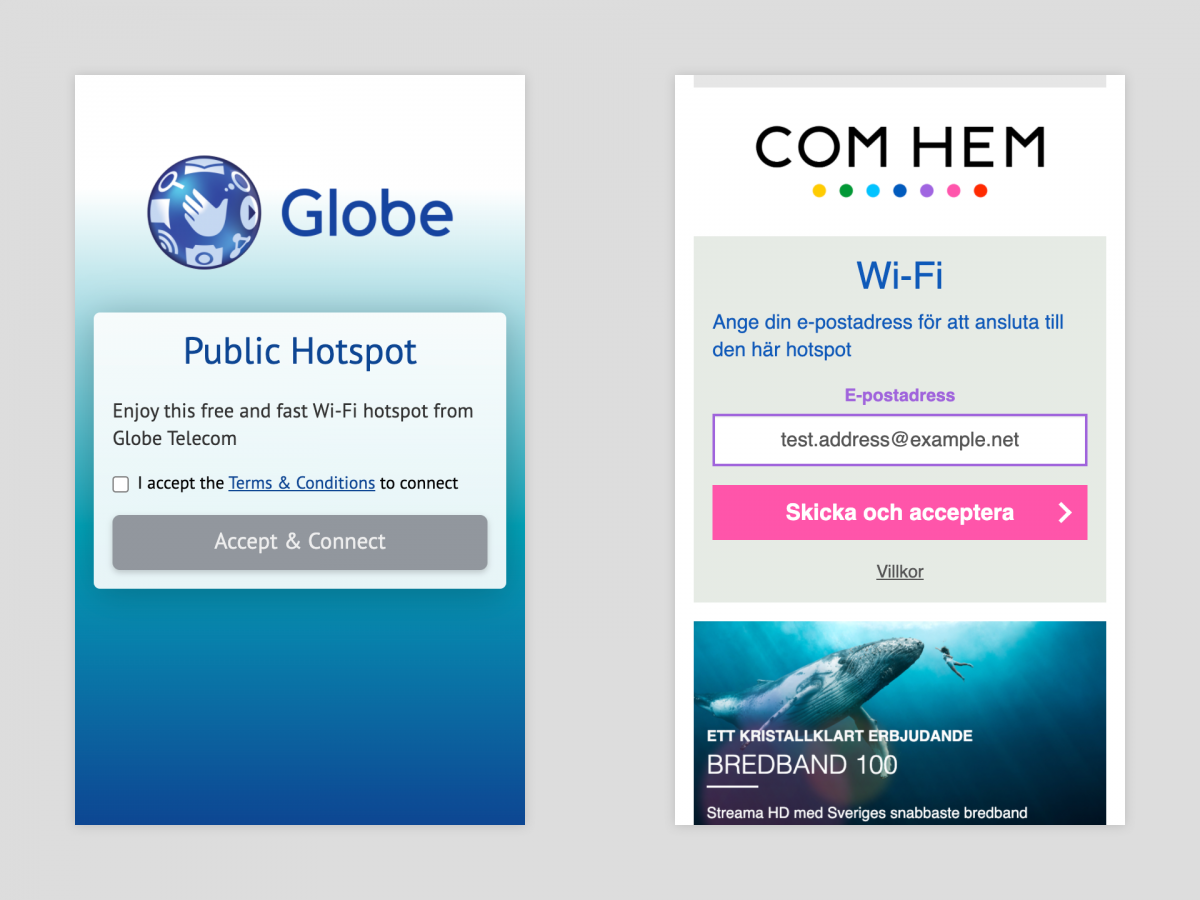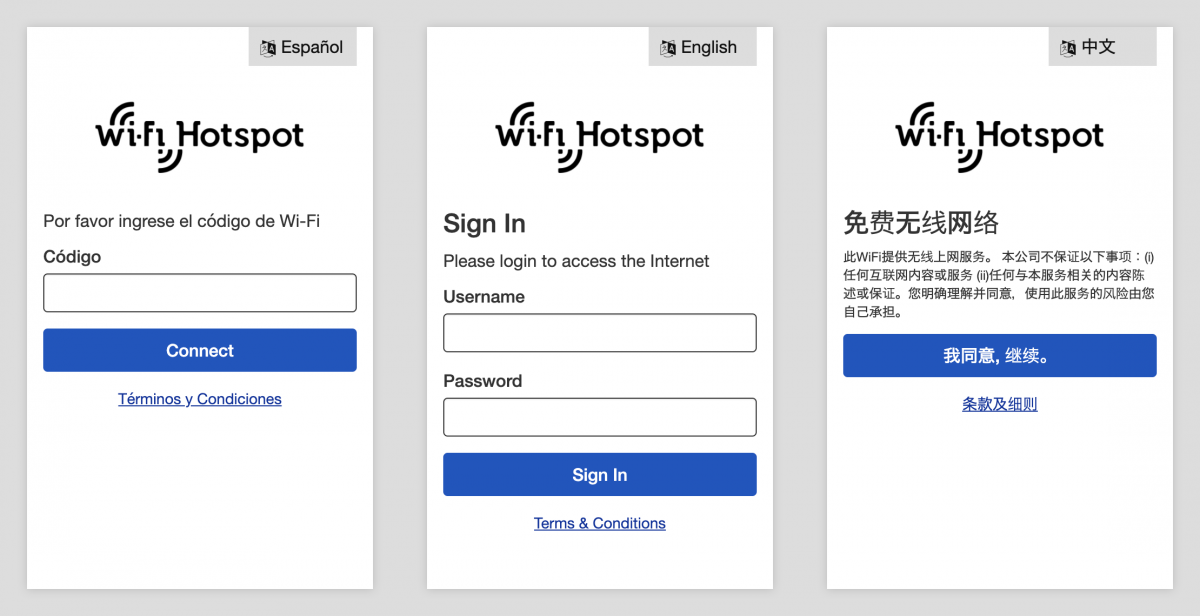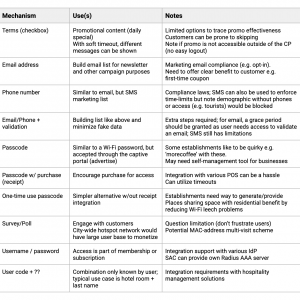Captive Portal B2B2C
In 2017, Incognito Software was developing a new suite of products to enhance the subscriber experience. I was part of the R&D team researching virtualized network functions potential. And one of the project was a virtualized solution for Wi-Fi hotspots.
Challenge
I was tasked with producing a prototype captive portal to showcase the technology to potential customers. A captive portal is a page that can be served by the Wi-Fi network when a user first connects. This page asks for authentication or acknowledgement before allowing users access to the Internet.
Prototype
I first started with testing existing captive portals and drafting wireframes to map and understand the user flow. This also mapped out the implementation scope required for the prototype.

As the plan was to conduct a demo to select customers, I based the first designs on their brands. The idea behind this is to help the audience quickly visualize how the solution might look and feel like when implemented.

I then started working on the working prototype. Working with the engineering team, I bundled a front-end of the captive portal for use with the first alpha of the solution.
Building the prototype allowed the team to review the experience firsthand. This became a testbed for performance as the team worked out virtualization kinks.

Business to Business to Customer
The prototype was presented to customers and also demonstrated at a trade show, with great results.
I was then tasked with developing potential use cases to improve market fit. The work started with market research and interviews with stakeholders and customer contacts. For ISPs, Wi-Fi hotspots can become another revenue stream. Even when offered at no cost, the benefit is brand recognition improvement.
I also talked to peers who operated businesses like cafes and auto repair shops. This helped me develop some understanding of customer needs. At the same time, I started on a playbook of methods to authorize and authenticate users. This was to explore potential uses and also note restrictions.
While users want to spend the least amount of time burdened by a captive portal, it was a potential user engagement point. I conceptualized a sample campaign strategy that utilizes the flexibility offered by the captive portal.

Incognito Software operates in the business-to-business space, but its customers (ISPs) purchase solutions to better serve their customers. Exploring promotional opportunities with hotspot services helps ISPs engage with business customers and develop partnerships. As talks progressed, I built prototypes using the customer of my customer.

The captive portal solution also needed a default template before it can ship. So I created starter templates that covers common access methods that can be used out-of-box.

Outcome
The working prototype helped seal the deal for a joint R&D venture with one of the biggest telco operators in South East Asia. The project was also one of the first to expand Incognito’s reach beyond the last mile (the final leg before a telecommunication service reach customer premises).
